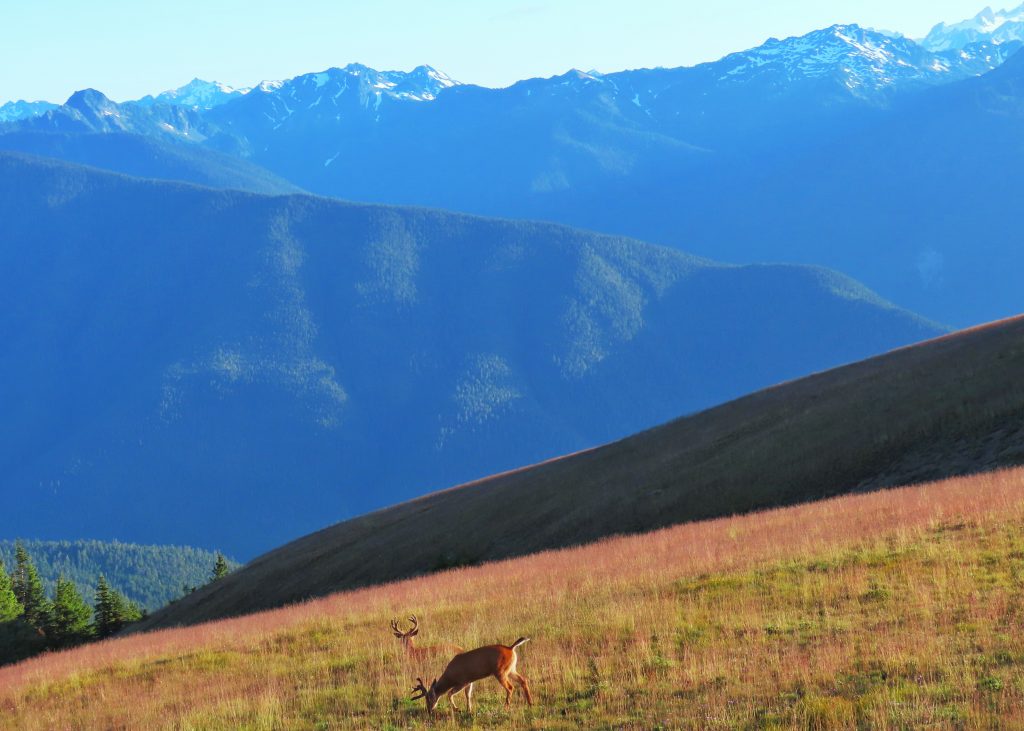
I love deer! Until I developed my fascination with birds, bugs, and botany, seeing deer while afoot in their element was often the high point of a day in the woods. I used to hunt them, and bagged a couple in my teens. And I don’t have anything against killing game for the meat, although sport hunting for trophies certainly can fall into a moral gray area, depending on how it is practiced. But in my 20s, with easy access to domesticated meat sources, I became too tender hearted to kill wild animals.
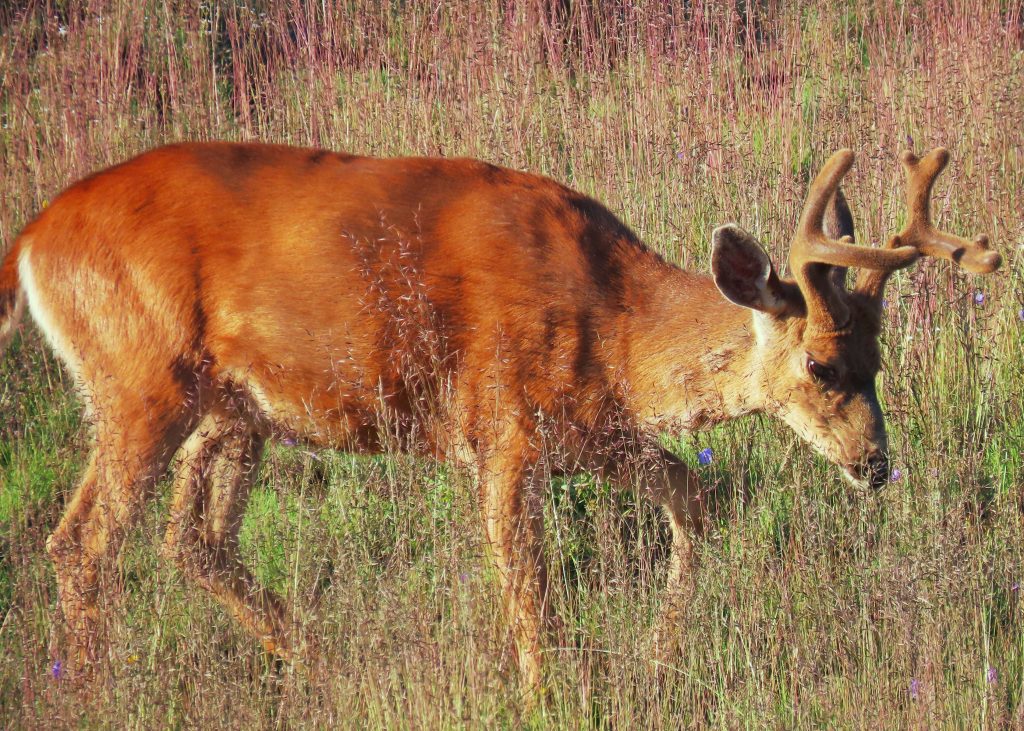
Now I just hunt with a camera. In many ways it is much more fun, and success, in terms of finding something interesting to shoot, is virtually assured, but that is only because my target has expanded to include all living things. I do notice that when I head into the woods with species specific goals that the fun diminishes as my focus narrows, but I also notice that the guitar string sensitivity to every nuance of the environment is impossible to replicate with a camera instead of a gun. But that is a fair trade when the upside is standing on a riverbank with my non-binary offspring (nbo) Morgan, just grokking in the fullness of a glorious autumn morning, when they motion obliquely and I turn to find a doe and two fawns unconcernedly browsing on willow leaves 20’ away.
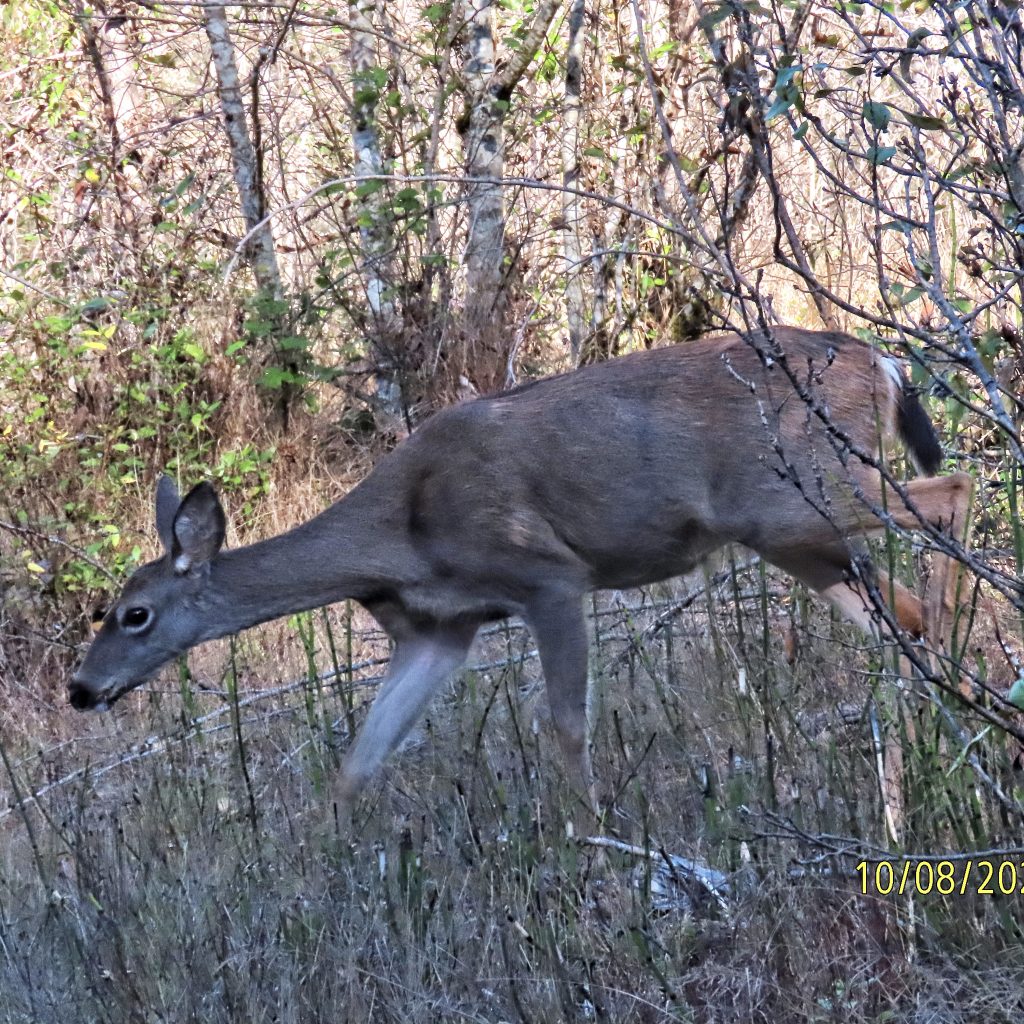
Which is exactly what happened yesterday morning on our weekly (health, COVID-19, and prior responsibilities/commitments withstanding) jaunt in Nature. We were at Oxbow Regional Park, along the Sandy River in Multnomah County, Oregon. One of the great benefits of visiting wild areas with high human traffic, especially on a day of low human traffic, is that the unharassed animals haven’t learned to fear humans, and can be closely observed in more-or-less natural behaviors.
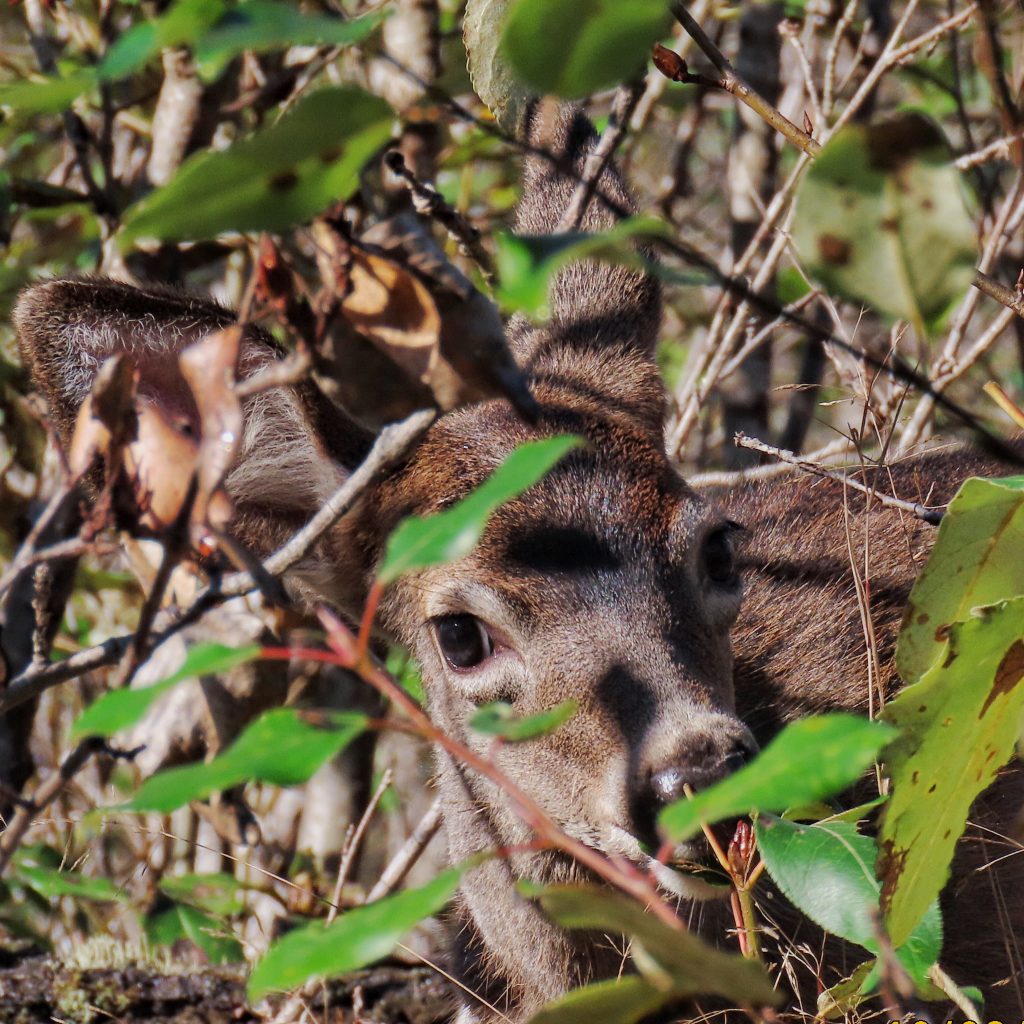
These are Black-tailed Deer, or simply Blacktails. They were considered to be a separate species for quite some time, but molecular testing has shown they are more properly considered as a subspecies of Mule Deer (Odocoileus hemionus). Although this may be a misnomer because mitochondrial evidence suggests that Black-tailed Deer are evolutionarily older than Mule Deer, and that in fact an infusion of White-tailed Deer (Odocoileus virginianus) genes into the Blacktails may have pushed the evolution of Mule Deer. However, scientific naming being ordered the way it is, Mule Deer (Odocoileus hemionus hemionus) are the nominate subspecies because they were described in the literature before Blacktails (Odocoileus hemionus columbianus).
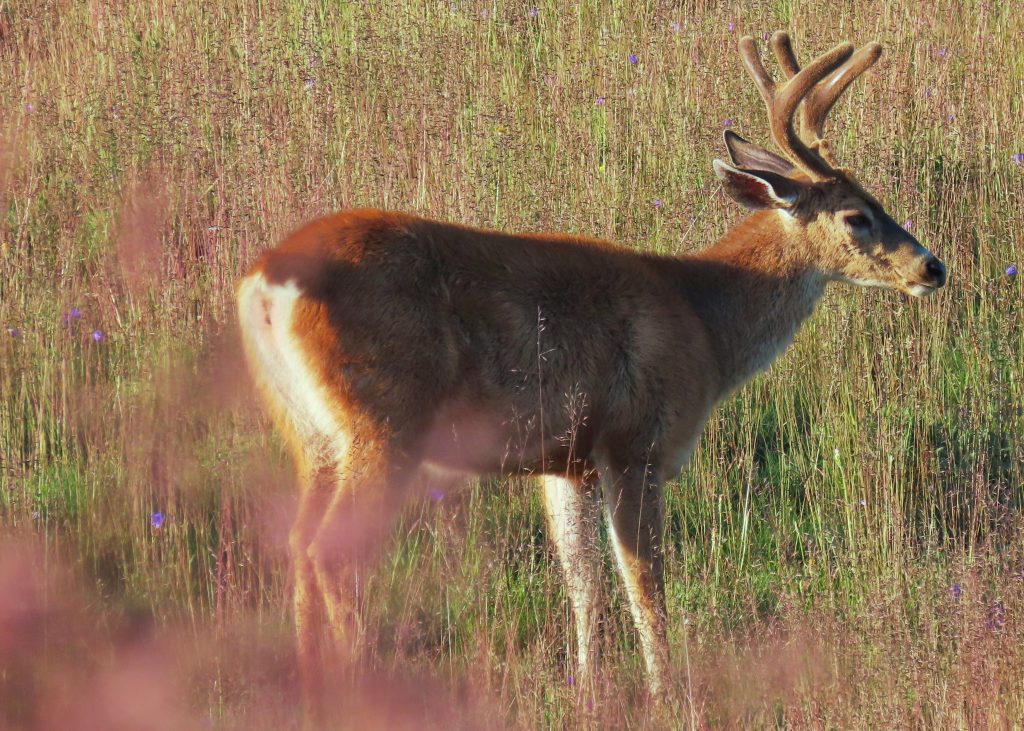
In our region it is usually not difficult to differentiate the subspecies. Blacktails live west of the Cascades, Mule Deer live on the eastside. However, there is overlap in the Cascades and in the Siskiyous. In these areas it should be noted that Blacktails have a stubby, flat, triangular tail which is usually held away from the rump, with a black stripe running the full length, and the white on the rump does not extend past the base of the tail, while Mule Deer are larger, their tails are usually rounder with only a black tip, and much more white on the rump. But, it must also be noted, there is hybridization wherever their ranges overlap.
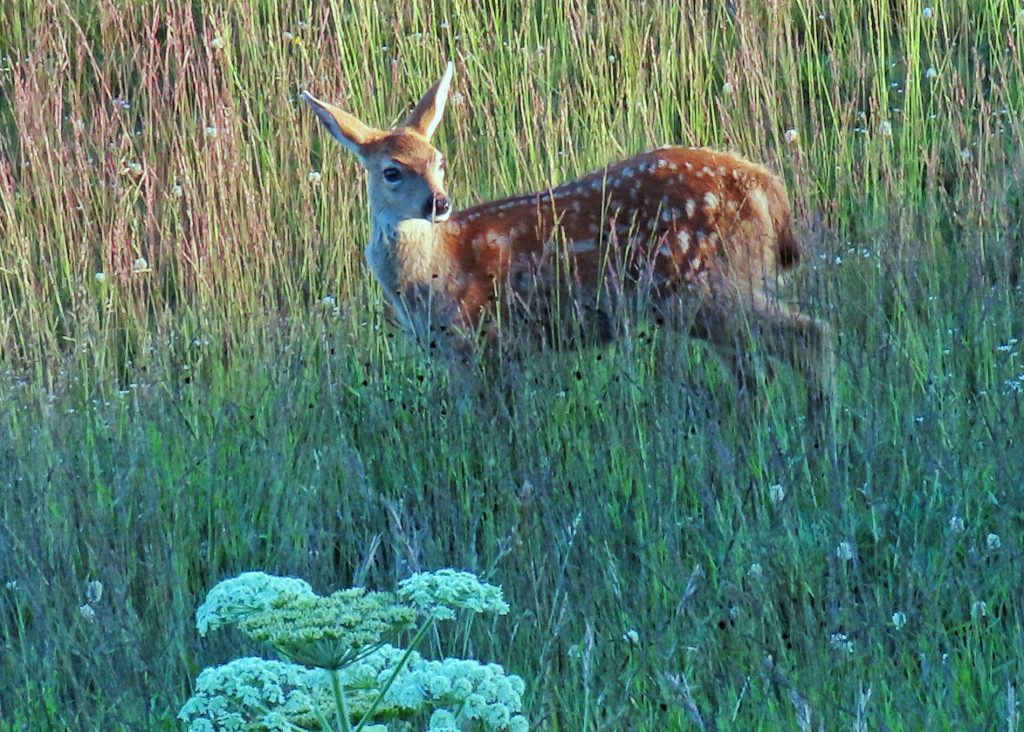
In the range of the Blacktails there are still remnant populations of Columbia White-tailed Deer (Odocoileus virginianus leucurus), mostly along the Lower Columbia River and around the Umpqua River in Douglas County, Oregon, and distinguishing between the two can be tricky. Blacktails have noticeably longer ears, and tend to be a darker, redder or grayer brown, while Columbia Whitetails are lighter colored, more of a tan or light brown. The tail of a Columbia Whitetail is longer, has a wide brown stripe with minimal white at the margins, and is usually held flat against the rump when they are undisturbed. The rump itself has less white than that of a Blacktail, and what white there is is usually hidden by the tail. There are details of antler configuration, amount of white on the face and throat, and the way they run when startled, that are also used to differentiate the two species, but these characteristics seem less cut and dried in our populations, and are probably more applicable to differentiating Whitetails and Mule Deer where their ranges overlap in ne Washington, Idaho, Montana, and ne Oregon.
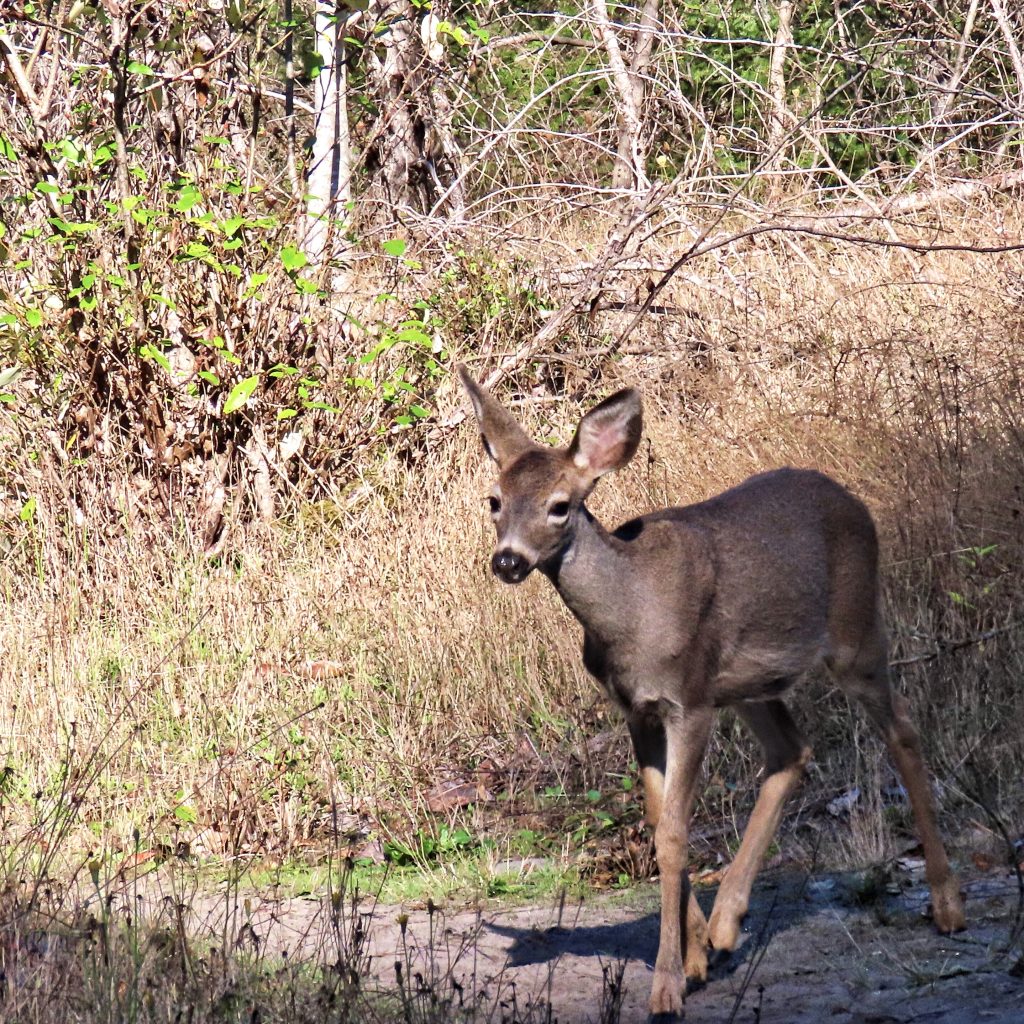
Blacktails, like most deer but unlike elk, are browsers rather than grazers, preferring leaves and leafy forbs to grasses. Females may breed as early as their first winter, but males aren’t sexually mature until their second year. The spotted fawns usually arrive in mid spring, although it may not be until June in higher elevations.
Males grow new antlers each year (that is the distinguishing characteristic of antlers as opposed to horns, which grow continuously throughout the life of the animal), which are nourished by the blood vessels of the ‘velvet’. When the antlers are fully formed and hardened, usually by mid September but often earlier, the velvet dies and is sloughed off. Once the breeding season (rut) is over in December the antlers may be shed at any time, although young and/or unsuccessful breeders may retain them for quite awhile. Pam and I once saw a ‘forkinghorn’ Blacktail buck in late February that still retained its antlers. An interesting side note is that a buck sustaining a hind leg injury will usually have a stunted or otherwise abnormal antler on the opposite side.
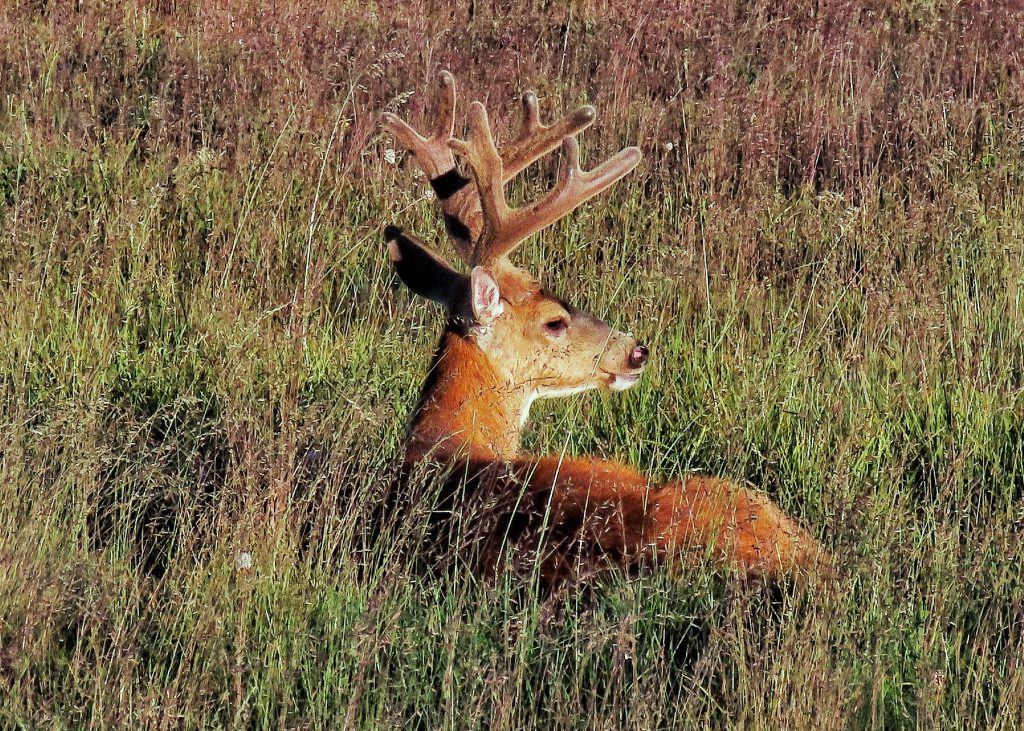
https://en.m.wikipedia.org/wiki/Black-tailed_deer
https://animals.mom.com/blacktailed-deer-6477.html
Size- 3-3.5’ tall at back; bucks may weigh 150 lbs, does seldom over 100 lbs
Habitat- Ubiquitous where there is forage; even found in suburban areas
Range-Mostly west of the eastside of the Cascades
Eats- Browsers which feed on leaves and leafy forbs
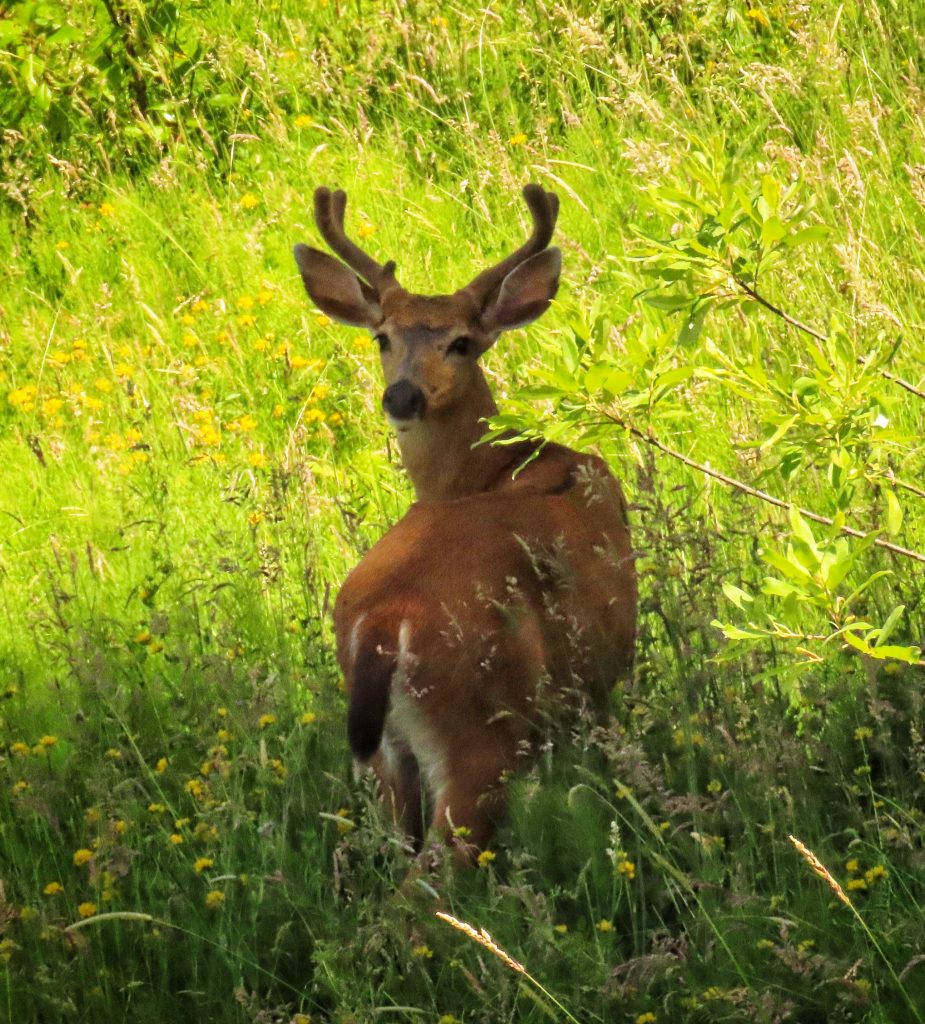
Interesting – I didn’t know that the various types mixed so much! I know some people consider deer to be pests, and it’s true their population is probably larger than it should be due to elimination of predators, but I find them to be so lovely.
Love the pictures! Learned a lot! Interesting about leg injury affecting the antler! 🙂